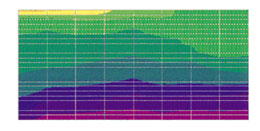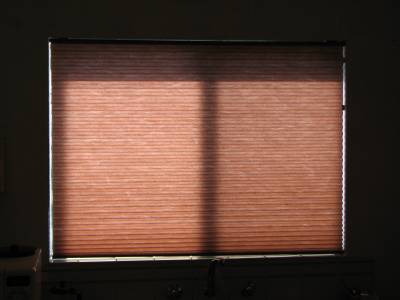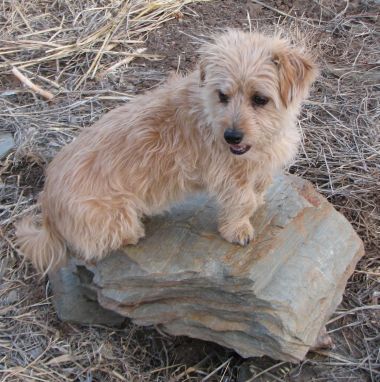Introduction
In an age when we are running out of conventional, easy to get, petroleum, when the dangers of fracking rock for unconventional gas are becoming clearer, and when the importance of minimising our climage changing and ocean acidifying greenhouse gas production is obvious to all but the stupid or intentionally blind, minimising our wastage of energy is all-important.Passive temperature control uses the environment and the properties of the building to control temperature within the building. Active temperature control uses energy consuming methods such as heating by burning fossil fuels and cooling with air conditioning to control the tempertures in the building. Passive temperature control requires thought and an understanding of the science involved, but uses little energy. While to fully utilize passive temperature control extra effort at the construction stage may be needed, some can be achieved just by minor changes to the running of a house and more by making relatively minor changes to a home.
| ||
|
- Insulation;
- Insulation limits the amount of heat that unintentionally enters or
leaves the building by conduction.
- Thermal mass;
- Thermal mass provides some stability to the temperature in the building.
- Controllable ventilation;
- If ventilation can be controlled then it may be possible to use the
cool of the night to reduce the temperature in the building, or the warmth
of the day to increase the temperature, whenever outside temperatures are
suitable.
Undesirable ventilation from gaps needs to be minimised.
- Control of the entry of sunlight.
- Stopping sunlight from getting into the building in summer,
but allowed to enter in winter (supposing that the sun is shining),
can give added control of temperatures without using energy.
- Using radiation
- Radiation moves heat from one place to another. Control of when and where radiative heat transfer takes place can be used to our advantage.
|
Movement of heat
|
- Conduction;
- When you touch a hot pot on a stove top heat is transferred to your
hand by conduction.
- Convection;
- A fluid (liquid or gas) that is warmed will (in almost all cases)
expand and become less dense than the surrounding fluid; it will then
rise while the surrounding fluid falls to take its place.
Applying heat to the bottom of a pot warms all the water in the pot much
more effectively than by applying heat to the top of the pot would.
- Radiation;
- The heat that you feal on your skin when you expose it to direct sunlight is moving by radiation. Radiation is most important when the radiating body is very hot (a red-hot radiator-type of room heater operates at about 900°C, the surface of the Sun is about 5500°C); although it can still be significant if the radiating body is large (for example, the ceiling of a room), but only a few degrees above the temperature in the room. It is the only way that heat can move through the vacuum of space.
Undesirable gain or loss of heat
|
- Sun shining through windows; or onto blinds, warming the blinds, then heating the room by convection;
- This can be minimised by:
- Ideally, stopping the sun shining on the window (by use of a shutter or similar on the outside of the building);
- Stopping the heat that gets through the window from getting into the room by the use of blinds or curtains.
- Pasing through walls, roofs or floors by conduction; the unwanted heat that is conducted through the ceiling will then get to the rest of the room by convection and radiation.
- This can be minimised by the use of insulation.
- Coming in with hot air that blows through gaps under doors etc.
- This can be minimised by blocking the gaps.
Desirable gain or loss of heat
Entry of sunlight into a building can be controlled by various means. Cooling or warming air can be allowed, when desired, to enter through open windows on one side of a buiding and out on one of the other sides; having open windows on two or more sides is much more effective than having several windows on one side.
|
Passive cooling by nocturnal radiation
Radiative cooling
Temperatures fall at night, but in the height of summer in my location
even minimum overnight air temperatures can be too warm to be comfortable.
| ||||
| ||||
|
How did this happen? At night, especially when there is a clear sky (as there usually is in the summer where I live) heat is radiated away into space where the effective temperature is about 3 Kelvins (that is, 3 degrees Celsius above absolute zero, -270°C). A slab of rock is quite a good radiator, and can lose heat by radiation faster than the surrounding air can warm it. (The bottom of the slab, which received radiation from the soil below, was at 16°.)
A clear sky is important to the principle; a layer of cloud would provide a barrier between the slab and the cold of space.
How can this be used to advantage?
A cellar, or for that matter a room, could be built with a concrete (or stone) slab roof. During the day the roof could be covered with insulation to stop it being warmed by sun light or the warm air; at night the insulation could be moved away so that the slab could radiate heat away into space.The experiment with the stone slab suggests to me that it would be possible to cool the roofing slab to around seven degrees below the minimum air temperature on a cloudless night. (The roof slab of my cellar is 150mm thick, so would be a little slower to cool than the 100mm stone slab of the experiment.)
|
I don't need this on my cellar; it is sufficiently cool even in the middle of summer (no more than 23°) without this form of additional cooling, but in an area of higher temperatures it could be valuable.
Adding evaporation to increase the cooling
If a shallow layer of water was to be ponded on top of the concrete slab this could increase the cooling effect even more.The layer of water could be kept topped up using a float valve. It would be necessary to consider the effect of strong winds on the layer of water; perhaps a single layer of gravel could be used to stop the water from being excessively moved about by strong winds.
Both the radiative cooling and the evaporative cooling would work best in dry areas. High humidity results in slow evaporation and also correlates with more cloud cover which produces a barrier to the radiative cooling.
|
Louvers on a roof for controlled passive heating and cooling
A black roof, perhaps concrete slab, could be combined with white insulated louvers to make very effective use of controlled passive heating and cooling of a building. The louvers would rotate to allow maximum sunshine onto the black roof when solar heating is required, closed when insulation is required and rotated to the vertical position when maximum cooling by nocturnal radiation is needed. The concrete slab would serve as a thermal bank.
|
- Maximising the insulation of the louvers;
- Minimising their number so as to minimise shading when they were in the open position;
- Minimising their thickness;
- Minimising the height of the louvers when in the fully open position (to minimise wind stress and optimise visual aesthetics).
The angle of the louvers would need to be computer controlled based on variables including:
- Ambient outside air temperature;
- Slab temperature;
- Amount of solar radiation;
- Angle of the Sun at the zenith;
- Whether heating or cooling was required.
The cooling of the space beneath the slab could take place by natural convection, but heating would probably require forced air circulation.
Challenges:
- Achieving a good seal when the louvers were closed would be of critical importance; unwanted leakage of air from beneath the louvers to the outside environment would greatly compromise the effectiveness of the system;
- Accurate and reliable automatic control of the angle of the louvers would be important.
|
What effect might a solar PV farm have on temperatures?
On the morning of 2018/02/06 I chatted with a bloke in The Bakehouse, Clare, where my wife and I were having coffee. He was concerned that a proposed 1000 acre solar PV farm would lower the temperature causing more frosts on his vineyard, which is adjacent.The vineyard owner's reasoning was that the solar farm would absorb energy, convert it to electricity, and send it off. Less, energy, lower temperatures; makes sense.
So I looked up the relevant research:
- A paper titled, "Larger solar power plants increase local temperatures", written by Greg A. Barron-Gafford, Rebecca L. Minor, Nathan A. Allen, Alex D. Cronin, Adria E. Brooks and Mitchell A. Pavao-ZuckermanNature;
- A paper titled "Researchers discover solar heat island effect caused by large-scale solar power plants", written by Graham Binder and published in Phys.org.
It seems that because solar PV panels are much darker in colour than farmland covered with dry grass they absorb much more of the energy from the sun and get hot during the day, while the pale dry grass reflects the light and heat back out into space.
However, this might not be the whole story. Dark things are better radiators than are light-coloured things – so the solar panels will be more efficient at radiating heat into space overnight than will soil covered with pale coloured dry grass. Of course the panels will cool quickly, while the soil beneath the grass will take much longer to cool. Will the increased rate of radiation from the solar panels lower the night-time temperatures making frosts more likely after all?
(As I write, at 1353 hours, 2018/02/06, the official temperature in Clare, South Australia is 35°C; according to my infra-red thermometer the underside of my solar panels are at 70°C, and there is patchy cloud; on a similar day without cloud they would most likely be hotter. There was very little wind at the time.)
Seeming to contradict the two above references, a paper written by Alona Armstrong, Nicholas J Ostle1 and Jeanette Whitaker and published on IOPScience reported an observed cooling of up to 5.2°C during summer in the UK.
Reading all three references suggested, as one might perhaps expect, the situation was not simple enough to say that the solar farm increased or decreased the temperature; it depended also on time of day and time of year, and also on exactly what the solar PV farm was compared to.
(And, of course, vineyards also are likely to have some impact on temperatures, they are dark coloured, so absorb heat. On the other hand, they transpire water, so cooling themselves.)
So what's the answer? I don't know enough to say.


